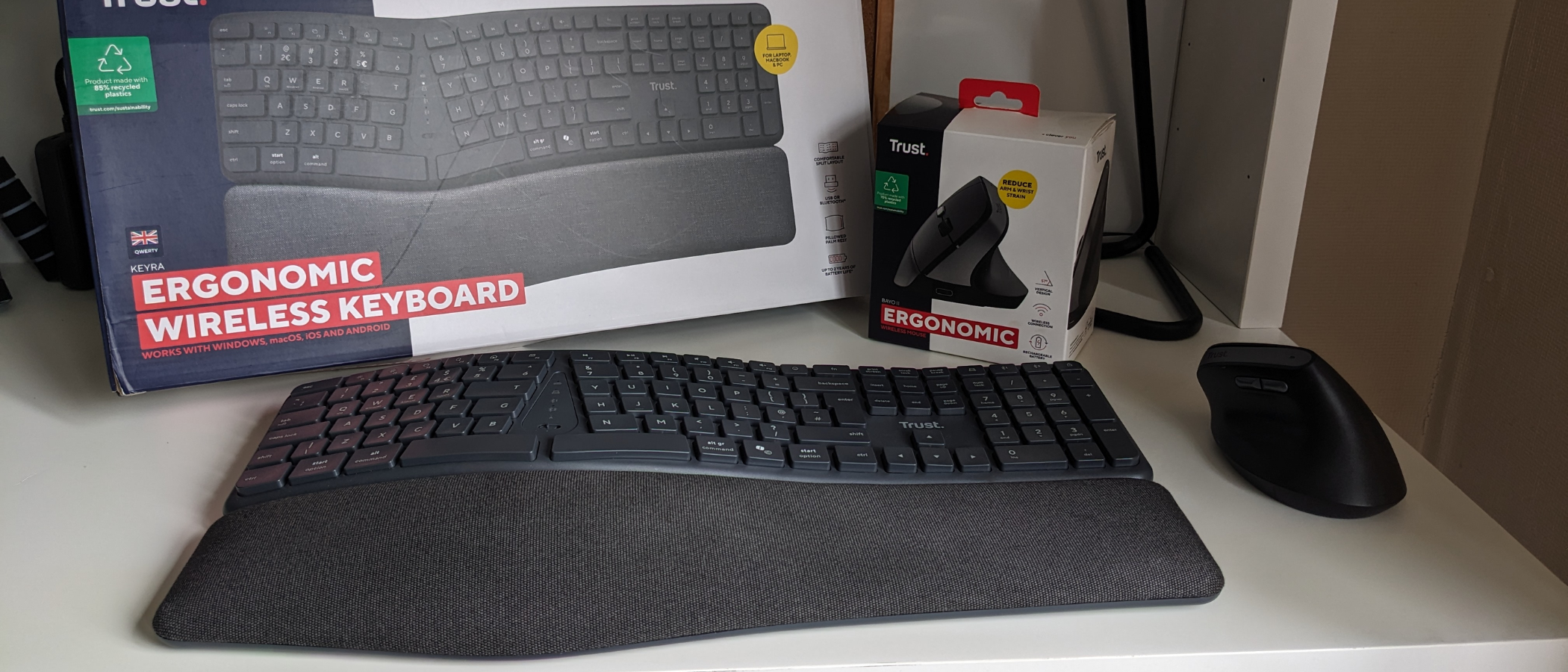TechRadar Verdict
The Keyra keyboard and Bayo II mouse are two ergonomic home office products from Trust. And both delivered on their promise to make working more comfortable. I took to the mouse like a duck to water, but moving from a standard keyboard layout, it took some time to get used to a new way of typing. The typing experience, though, was practically silent and very pleasant. However, my main issue is that while the mouse is readily available, the keyboard isn’t.
Pros
- +
Ergonomic and comfortable to use
- +
Near-silent typing
- +
Dual USB-A / USB-C wireless receiver
- +
Keyboard supports three device connections at once
- +
Plenty of useful mouse buttons
Cons
- -
Keyboard takes some getting used to if you’ve never used an ergonomic model before
- -
Keyboard is large (but it has to be)
- -
Keyboard not available in the US, and tricky to find in the UK
Why you can trust TechRadar
I’ve always been a bit wary of ergonomic computer peripherals. On the face of it, they look so unnatural, a mirror image to what they're supposed to achieve - namely, making work more comfortable and productive.
So, it was with a sense of apprehension, if not outright suspicion, that I approached the Trust Keyra ergonomic multidevice wireless keyboard and the Bayo II TM-270 ergonomic wireless mouse.
Could these oddly shaped devices be among the best keyboards and best mouse for professional use? Setting them up at my desk, I tested the pair of them out to see if it could make all-day typing and general work more comfortable and, of course, productive.
Pricing & availability
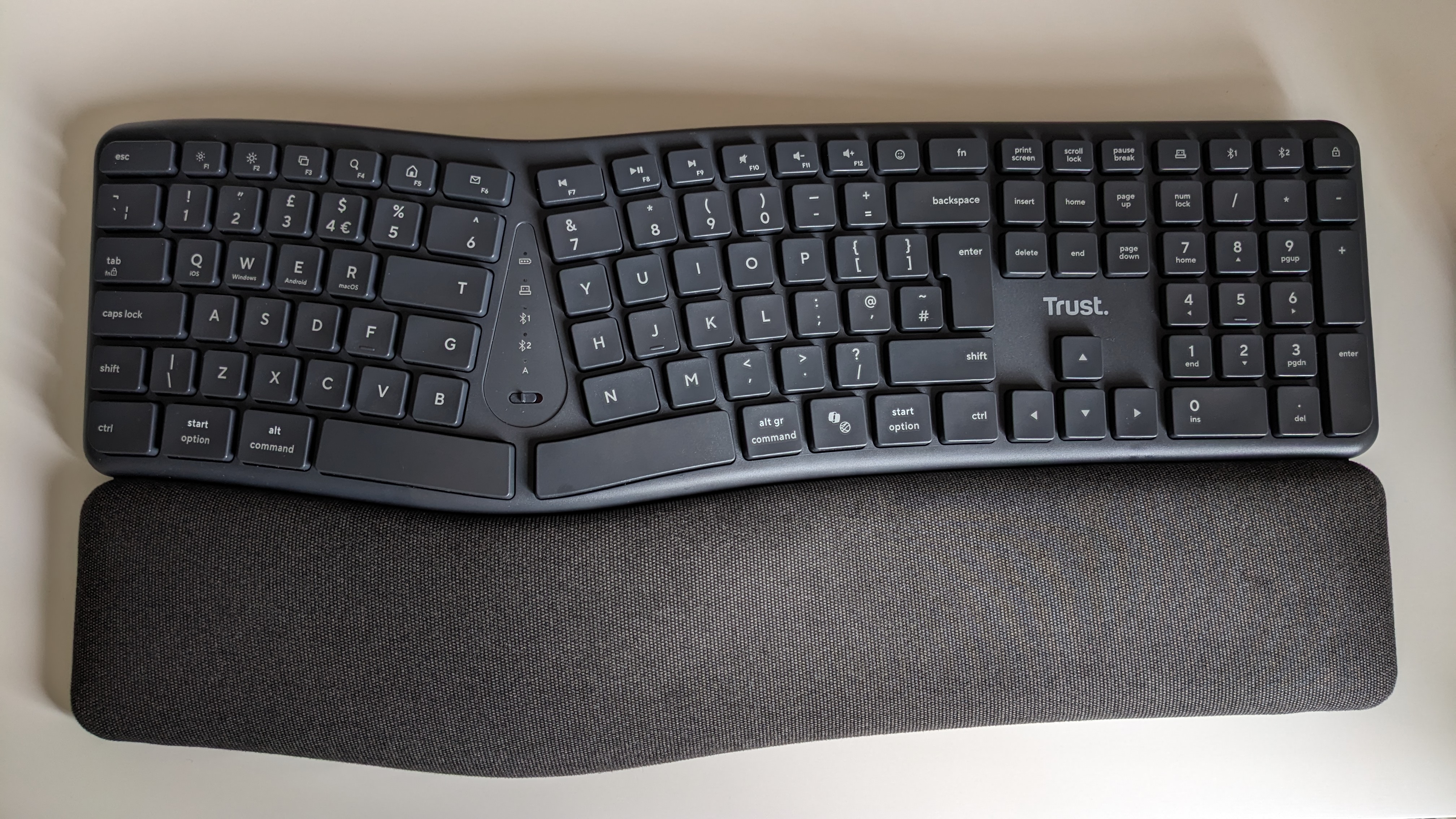
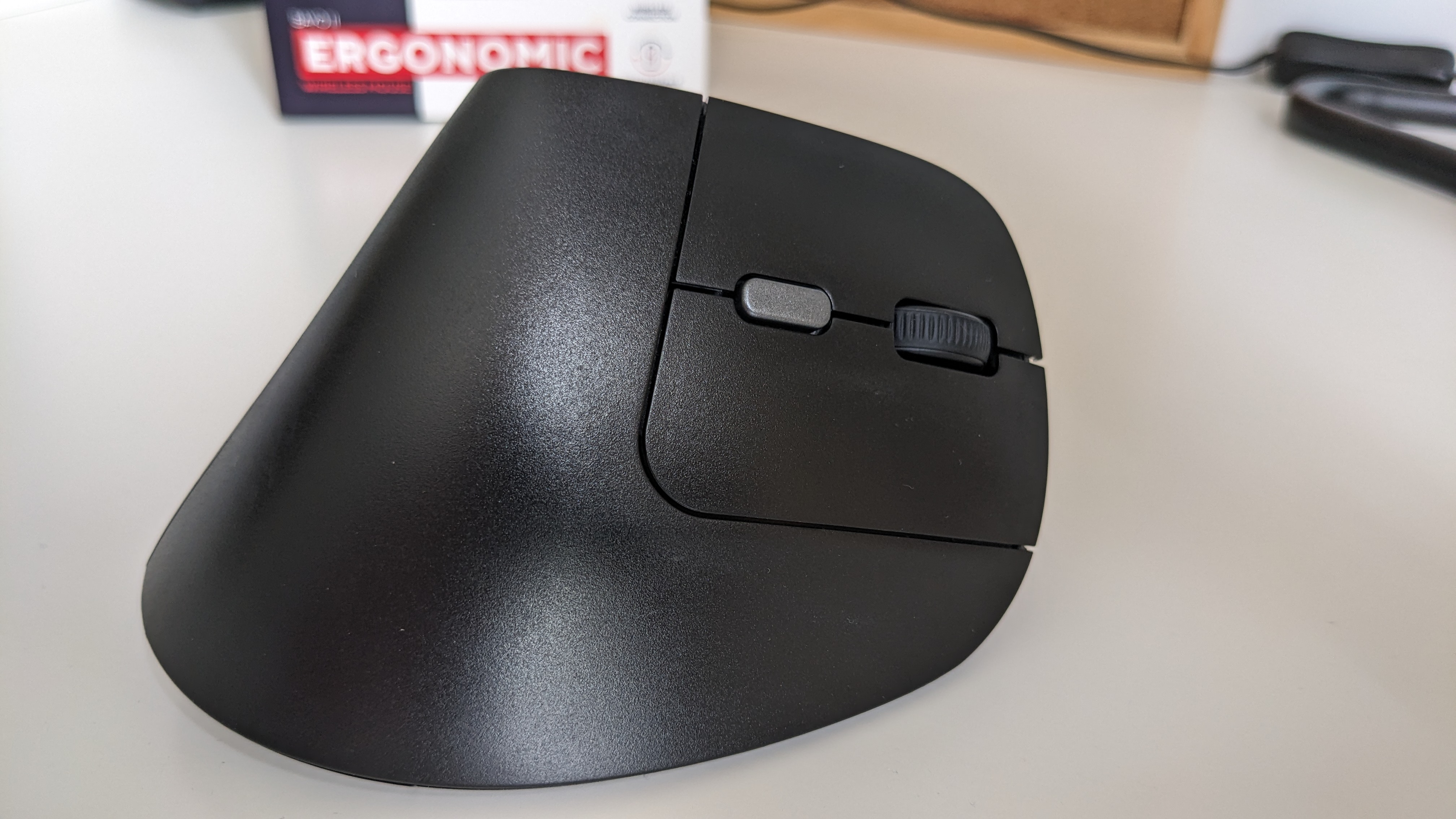
I quite like Trust products, which always seem well-made for a fair price. I consistently used the Ody II keyboard and mouse bundle (see my review here) until receiving the Keychron V6 Max for testing, and enjoyed Ody II’s silent typing, and the cost, so much I bought a second as a back-up.
Now, given its ergonomic design and focus on professional use, both the Keyra and Bayo II cost a little more than the £20 of the Ody II.
The Bayo II mouse retails for £35 and the Keyra keyboard is priced at around £60.
However, while I am seeing the mouse available at Argos, Currys, and Amazon.co.uk among other places, the keyboard seems a little more difficult to find in the UK, although it appears readily available in Europe.
Sign up to the TechRadar Pro newsletter to get all the top news, opinion, features and guidance your business needs to succeed!
Design
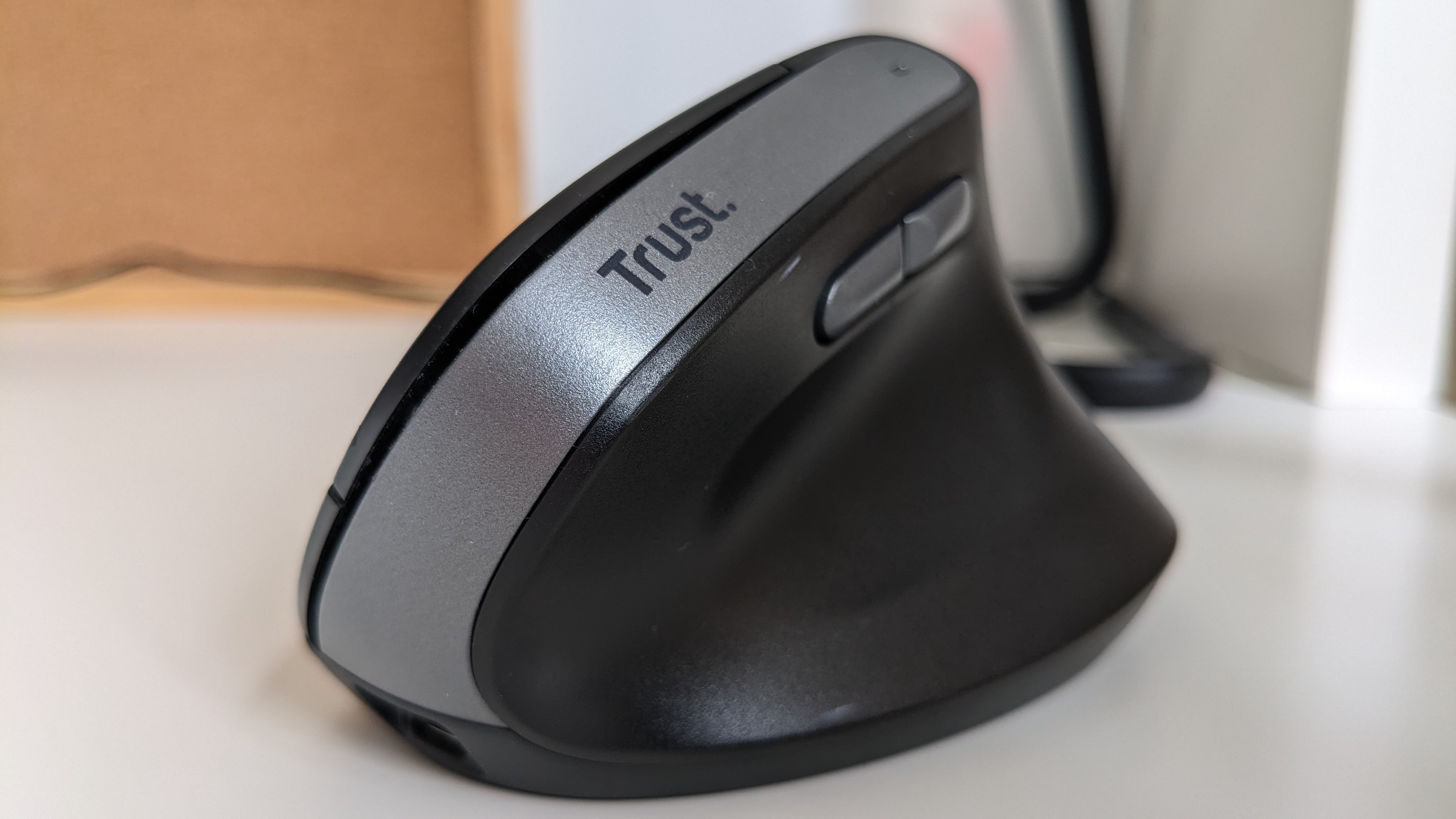
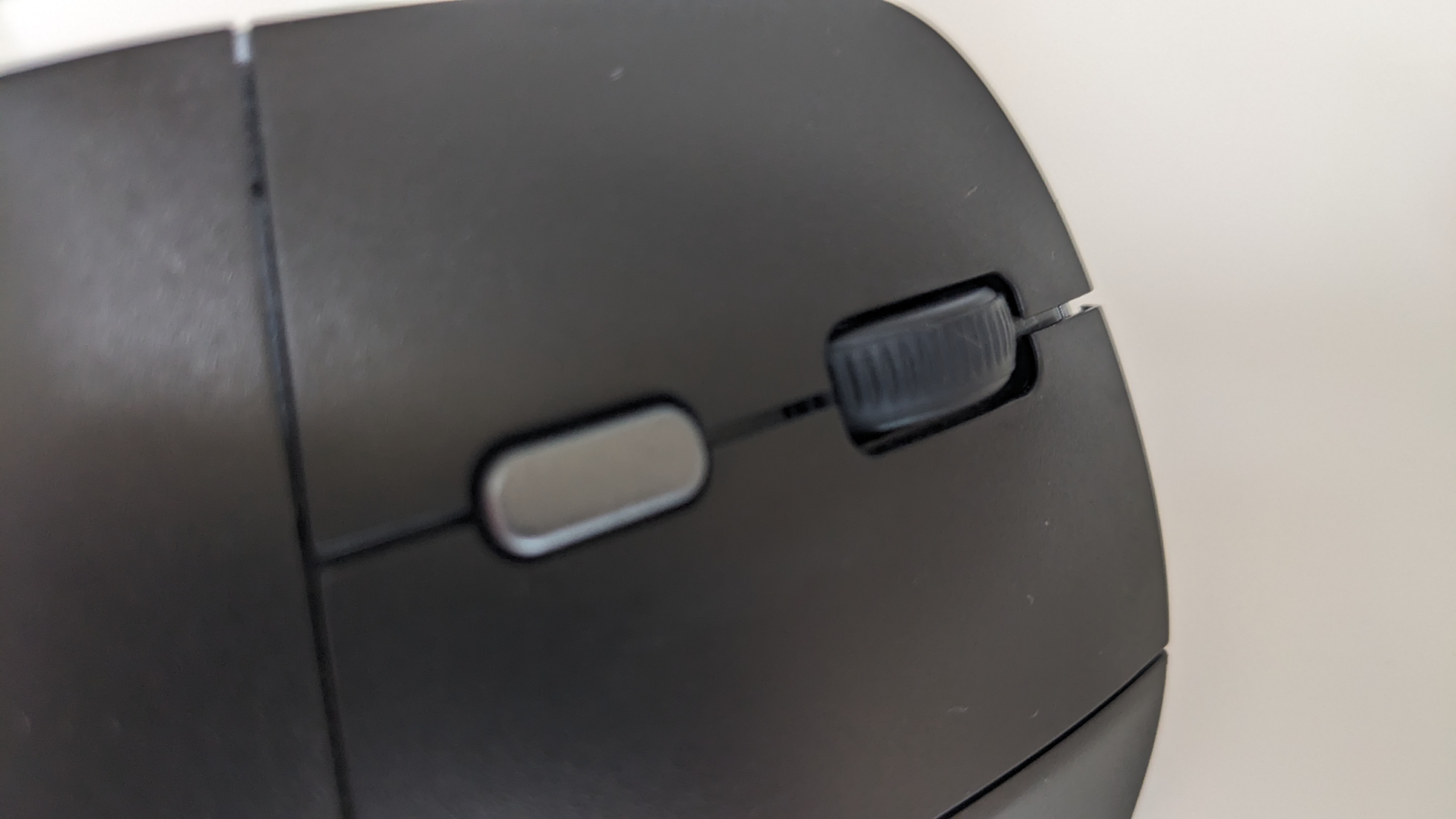
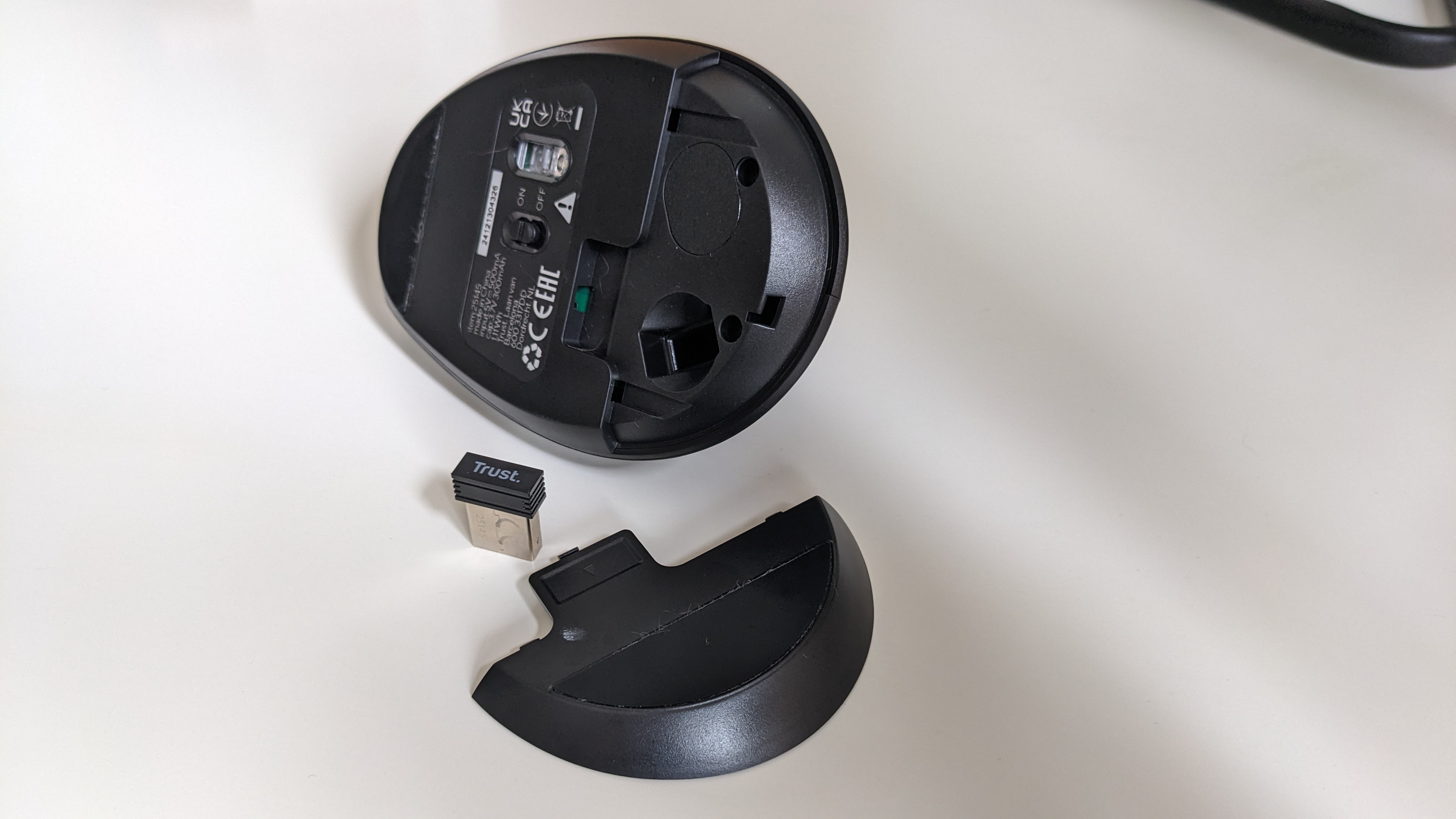
If you’ve used either an ergonomic keyboard or mouse before, the design will come as no surprise.
The Bayo II, which is chiefly black with a grey strip along the top, is a near-vertical design, slightly angled for right-handed use. It features two primary buttons, a scroll wheel, and a DPI button for adjusting mouse sensitivity between 800 and 2400 DPI on the fly. On the left side, where the thumb sits, are two buttons for moving back and forward in the browser.
Beneath the mouse is an on-off switch and a removable back where you can store the wireless receiver. On top, there’s a green light that softly glows while being charged. The USB-C port placement here is good - there’s no Apple mishap here, with the port on the bottom. Instead, it’s located at the front and foot of the mouse, as you’d find on a cabled mouse, so use is unrestricted. A USB-C cable is included in the box.
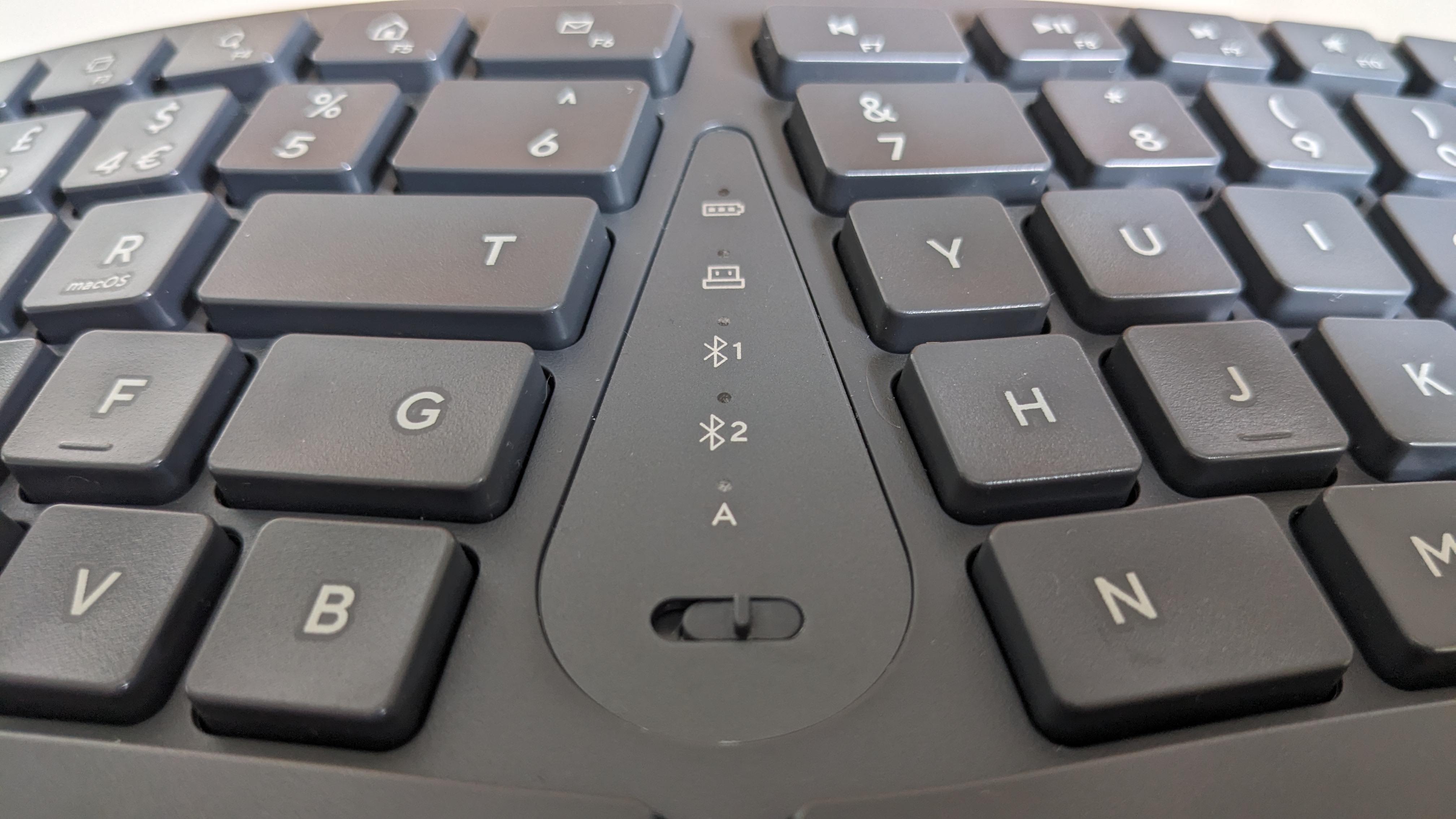
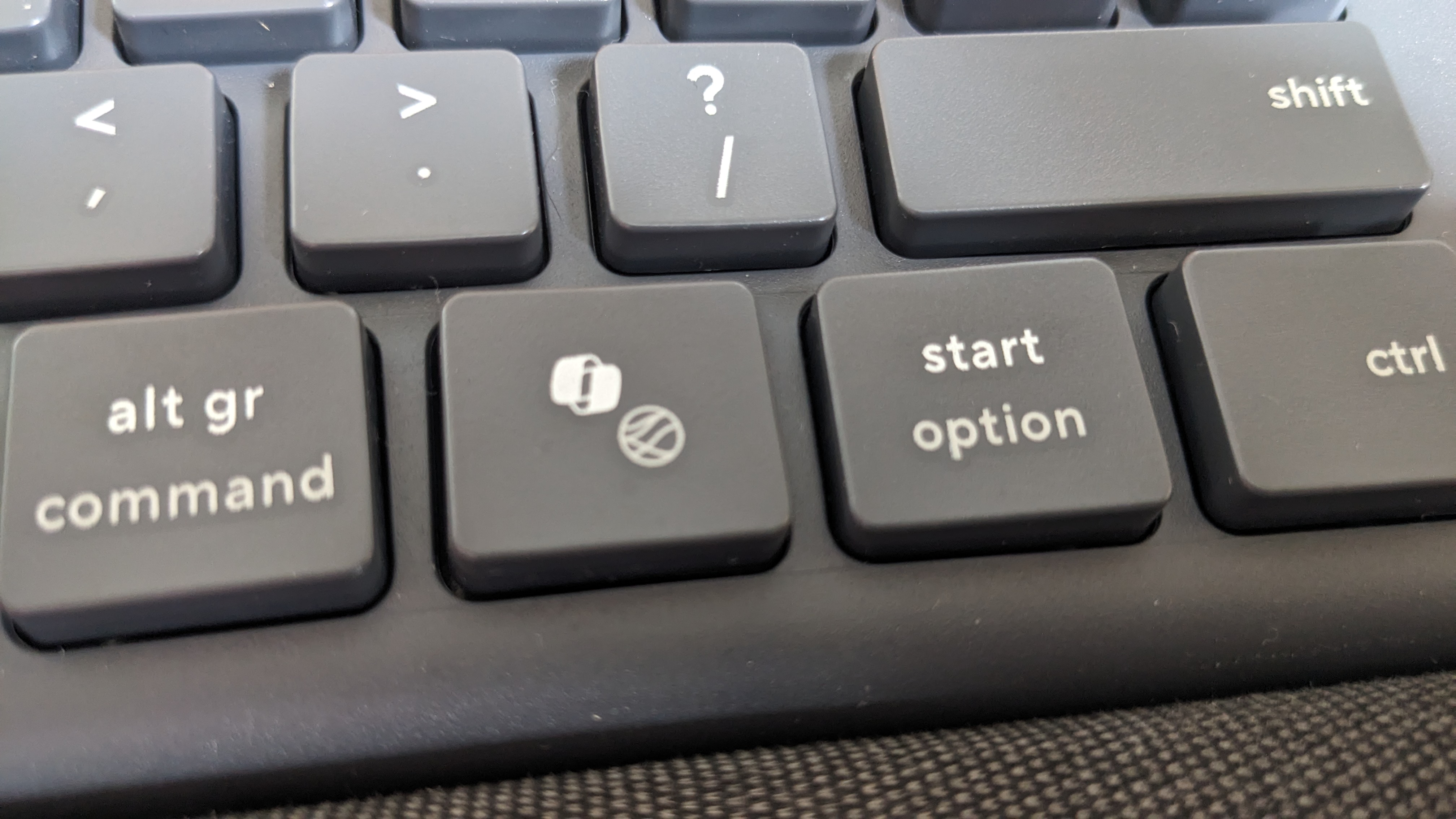
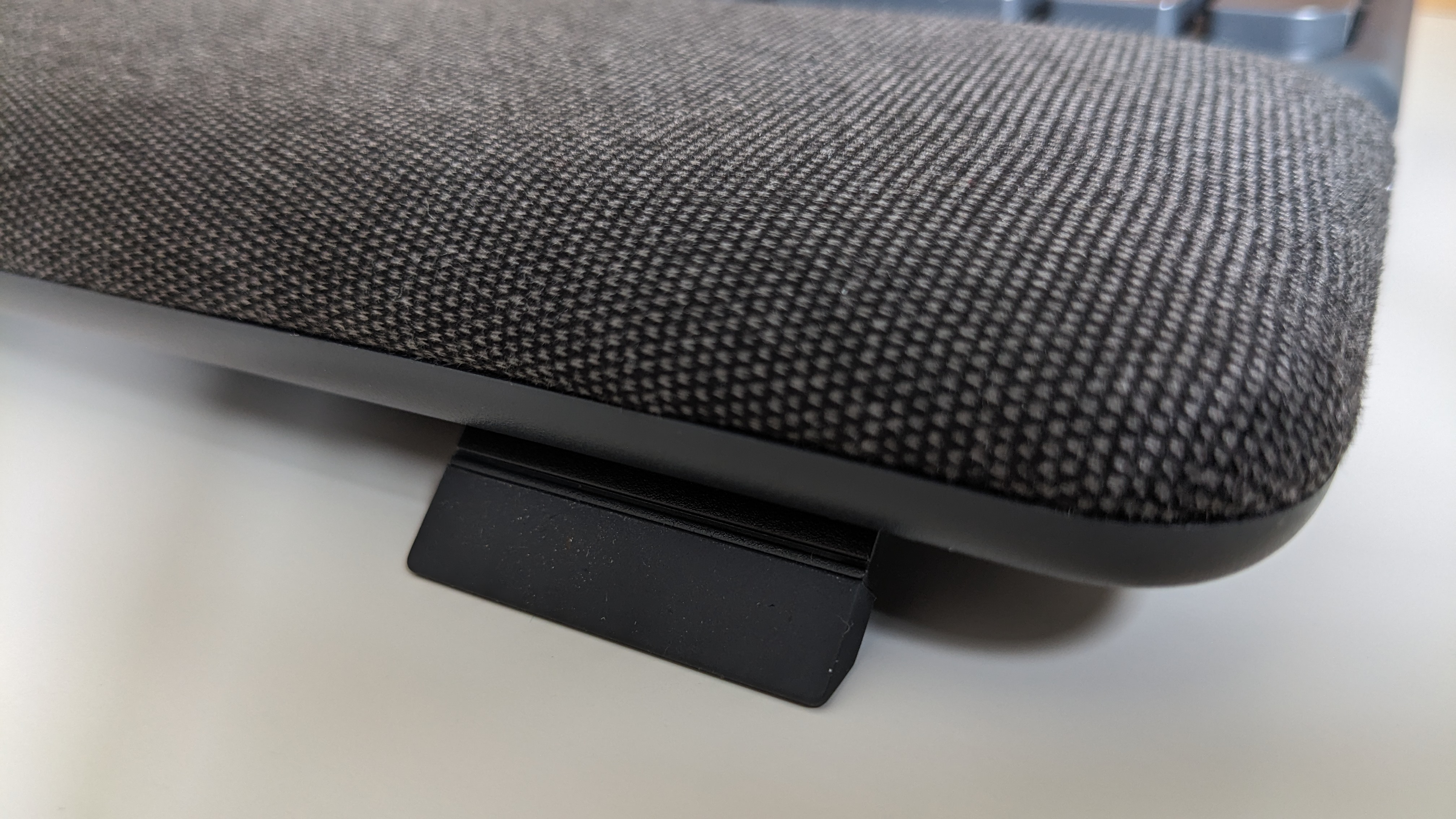
The deep-grey Keyra keyboard is a split design, with its keys bisected down the middle and angled for what Trust calls “a more natural hand and finger placement.” With 111 keys, it’s full-sized, with a host of dual-function buttons along the top and a num-pad - which I think is essential for most business professionals and students.
There’s also a fabric-covered wrist rest built into the chassis, which adds to the already large size of the board, and demands plenty of desk space for proper use. However, I did find the extra size gave it more stability when typing on your lap as much as a desk.
Flip over the keyboard and you’ll find four fold-out feet, a slot to hold the wireless receiver, and a battery compartment, accepting two AA batteries.
Overall, both keyboard and mouse have a professional look and feel that wouldn’t look out of place in any office or home office setting.
In use
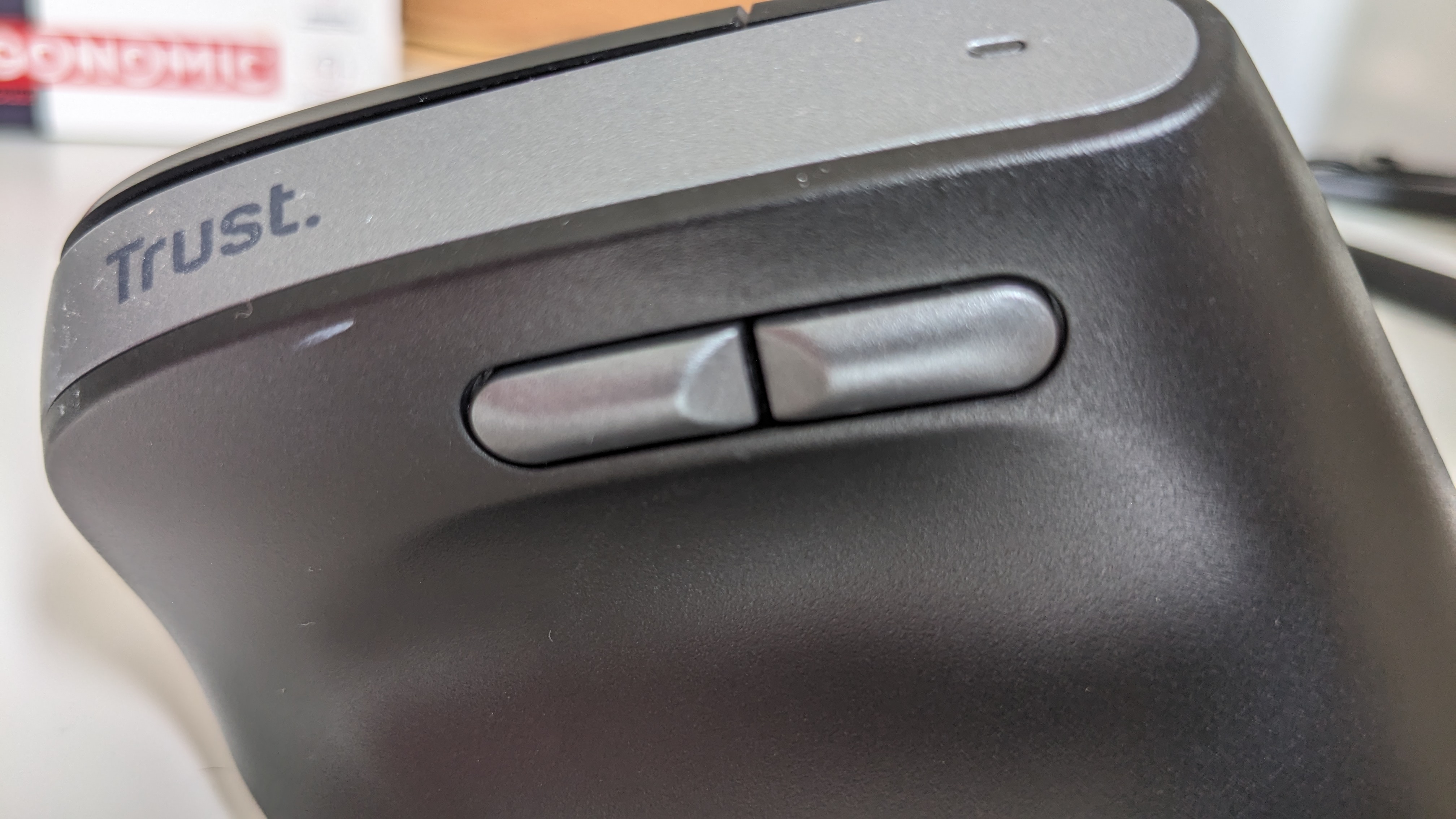
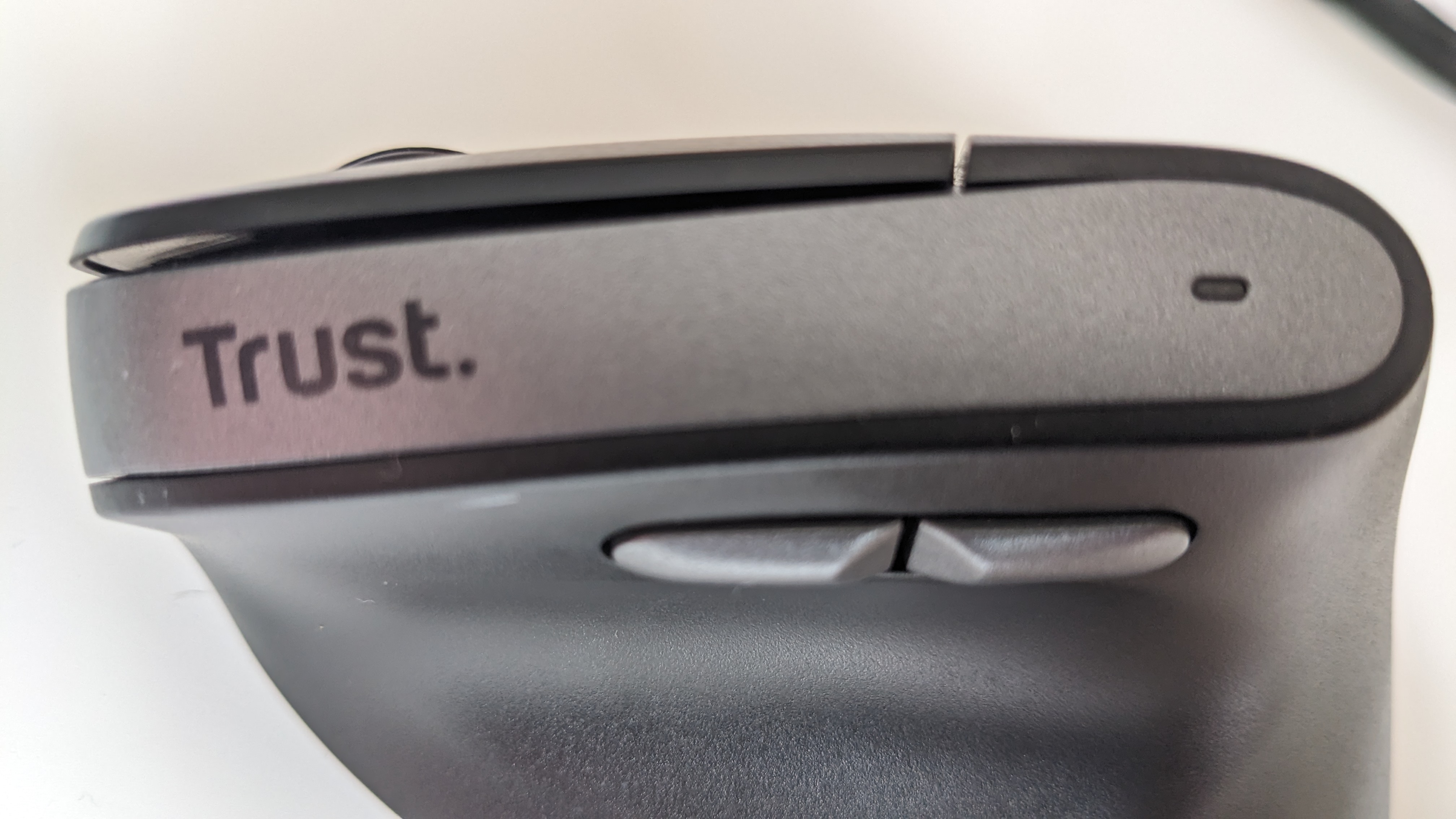
First, the mouse - it’s a delight to use. I mean, it’s a mouse, it moves the cursor, it clicks files and links, and does so accurately. Which frankly is all I’ll ever demand from a mouse. The scroll wheel is satisfying, the pointer is responsive, and the buttons didn’t stick throughout my testing. And I really liked having the additional back and forth buttons within touching distance. They’re well-placed for my thumb to use without straining or fiddling around trying to work out which one does what.
But does it fulfil its ultimate ambition? Is it more comfortable, more ergonomic? As a fella who’s generally selected low-profile mice for the last twenty-odd years, I can confidently say yes, it is. My hand is no longer arched awkwardly in mid-air, unsupported and aching. Now, the palm rests neatly along the chassis, supported throughout use, with fingers set in a natural position. Top marks.
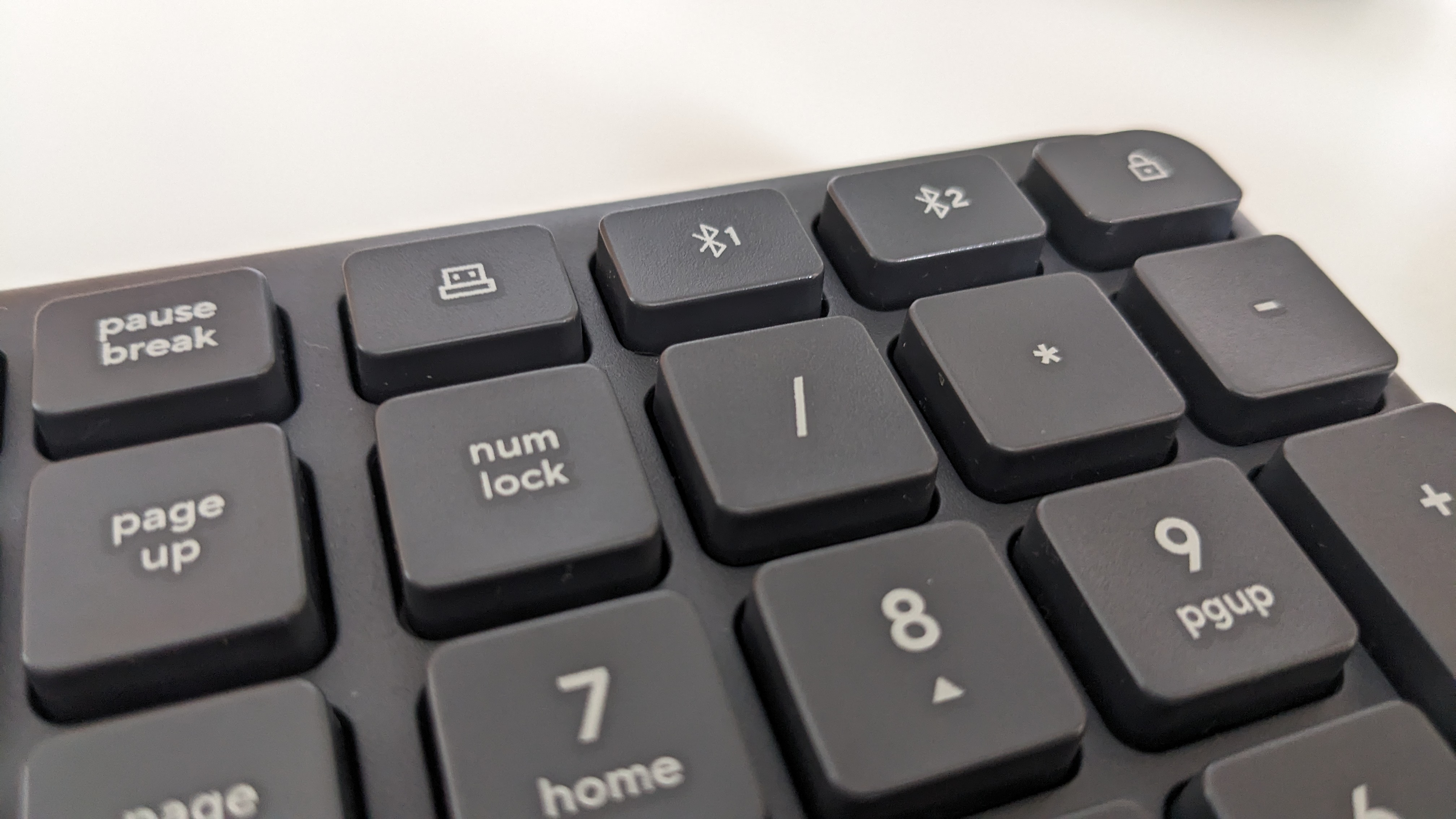
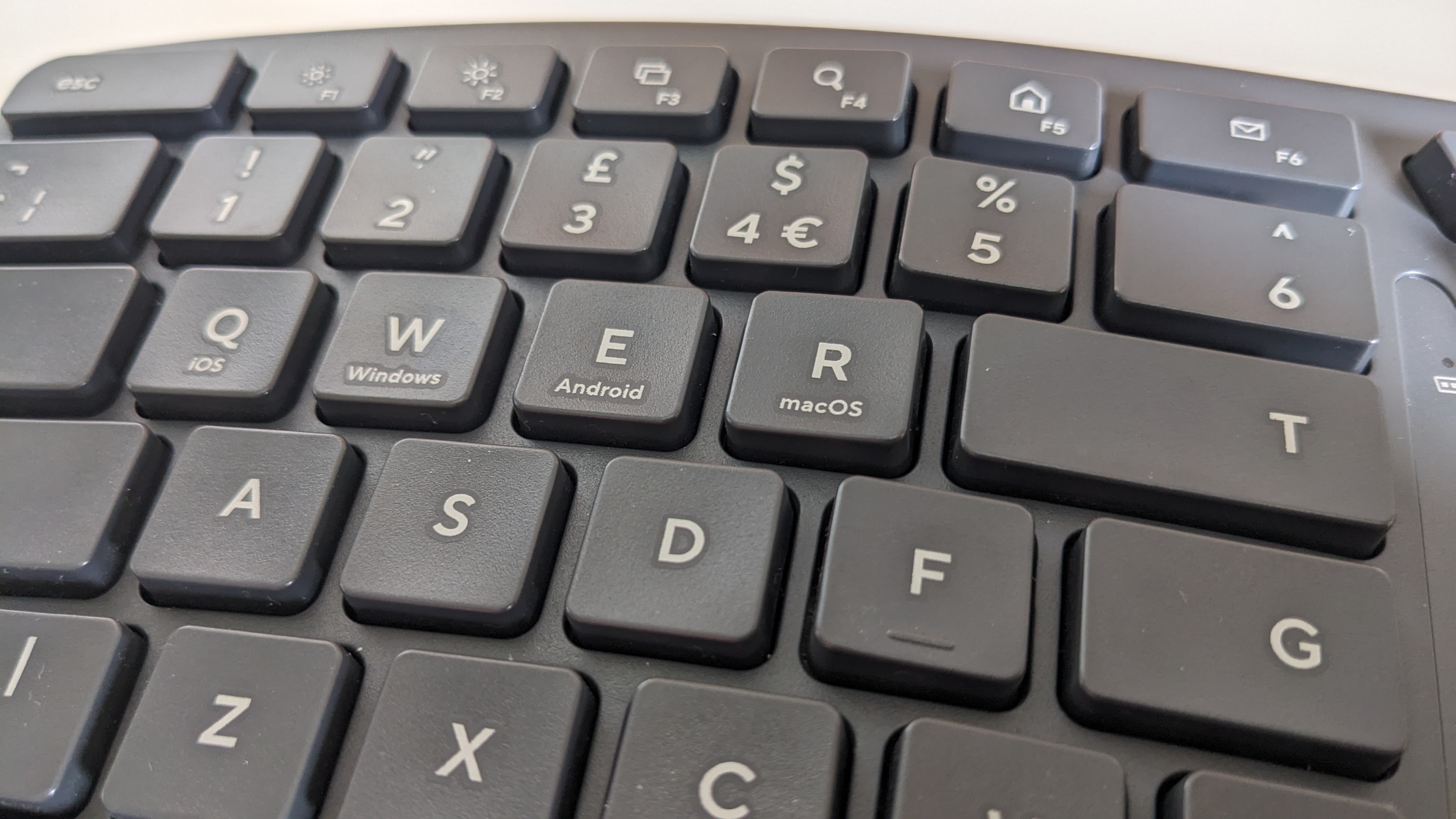
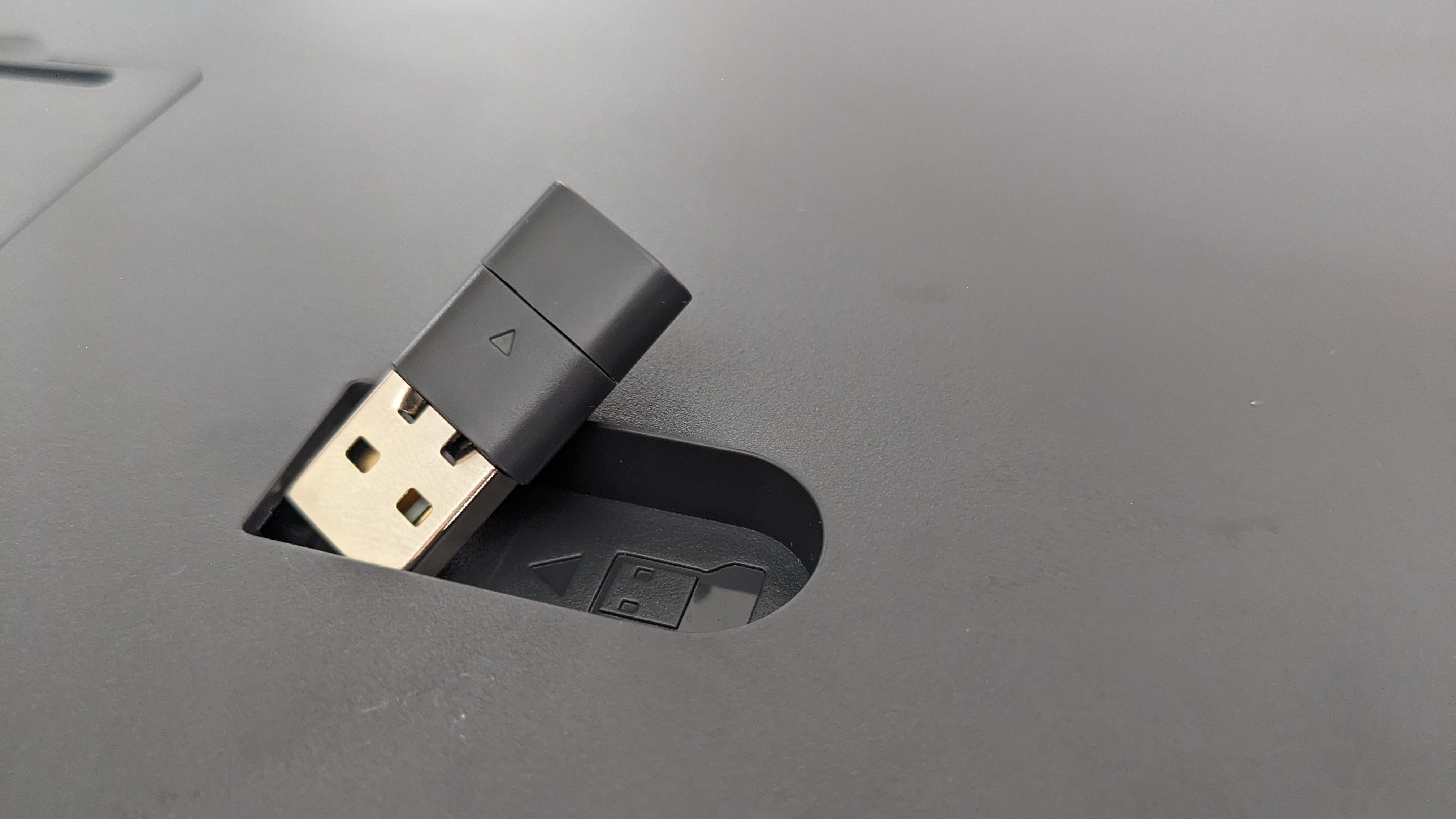
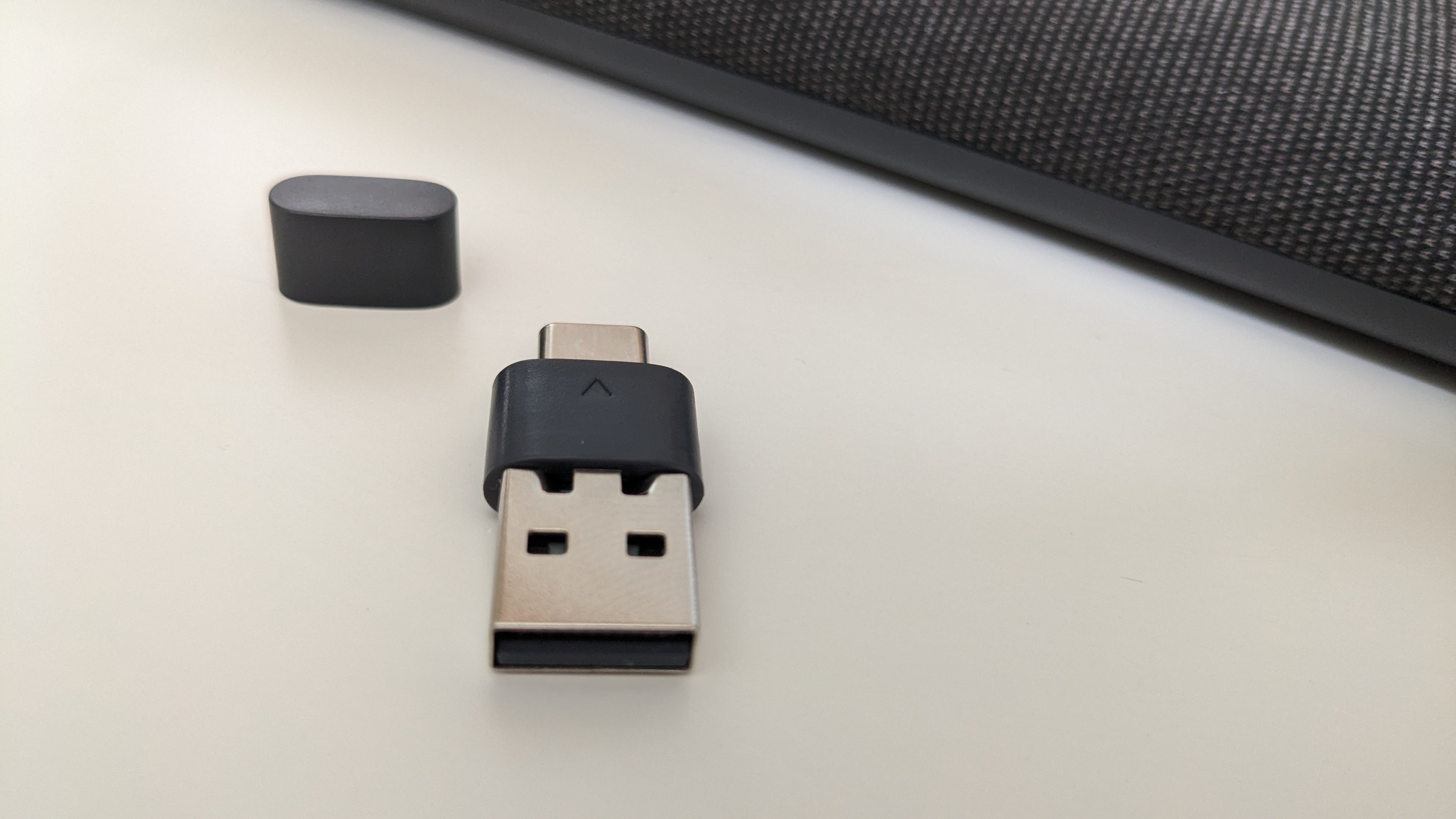
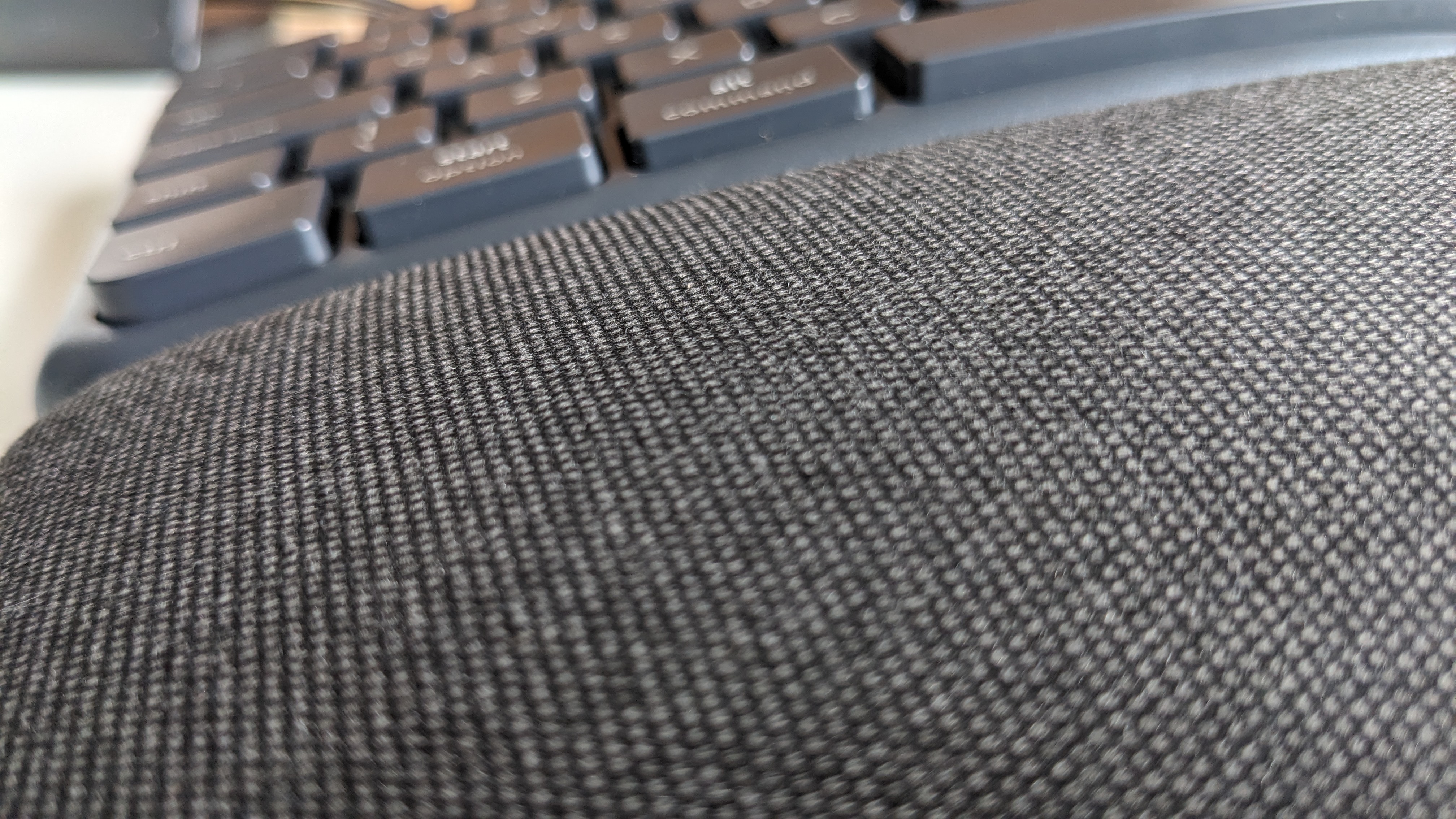
The keyboard is a slightly different story. That’s not to say it’s uncomfortable (it isn’t), but it absolutely takes some time to get used to if you’re new to ergonomic boards. Making the jump to a new keyboard is always dicey, as you’re fighting against years of muscle memory; to switch from a standard keyboard layout to one like the Keyra feels even more perilous. And if you’re a single-digit typist, then you’re effectively going to need to retrain yourself here.
With its membrane design, I found depressing keys even at speed was super-quiet if not silent, so it’s a good pick for those in shared workspaces. And there’s something satisfying about the typing experience as each depression feels straight and stable and without any rattling.
What’s notable about the Keyra wireless keyboard is that it supports multiple devices at once. Compatible with Windows, macOS, and Android, you also have the option of switching between any or all of them at the push the
Plug the dual-sided USB-A/USB-C wireless receiver into the device and connection is automatic - I used this on both a laptop and a tablet with no issues.
To get Bluetooth up and running, you’ll need to press down on one of the two Bluetooth keys located on the top-right of the board. The sparse instruction manual says to do this for three seconds, but this isn’t correct (believe me, I tried several times).
You’ll need to press and hold the key for five seconds to enter pairing mode, where the Bluetooth light in the middle will begin to flash repeatedly. After that, it’s plain sailing. Once all devices are paired, you can switch between them at the push of a button.
And is it comfortable to use? Yes - once you get used to the ergonomic style. The padded rest for the wrists is firm but not uncomfortable in any way - arguably, it would be worse if it were too soft. I like the sloping, convex design, and hand placement does feel more natural here, with a pleasing overall writing experience.
Should I buy the Trust wireless ergonomic keyboard and mouse?


Buy them if...
You want reasonably priced ergonomic home office accessories: Neither the mouse nor the keyboard is extravagantly priced (they’re about what I’d expect), and both felt comfortable, sturdy, and helped me stay on track of tasks.
You use multiple devices: The Keyra keyboard supports three device connections at once, letting you easily switch between laptops, tablet, and phone at the push of a button.
Don't buy them if...
You prefer a traditional keyboard style: While I’d recommend the mouse to anyone, no matter what they’re used to, the ergonomic keyboard is one of those devices you’ll either love or hate.
You just want a budget board and mouse: While I think these are priced about right for ergonomic home office products, they’re not the cheapest around. For that, I’d still recommend something like the Trust Ody II keyboard and mouse combo, which offers amazingly good value at the £20 mark.

Steve is B2B Editor for Creative & Hardware at TechRadar Pro, helping business professionals equip their workspace with the right tools. He tests and reviews the software, hardware, and office furniture that modern workspaces depend on, cutting through the hype to zero in on the real-world performance you won't find on a spec sheet. He is a relentless champion of the Oxford comma.
You must confirm your public display name before commenting
Please logout and then login again, you will then be prompted to enter your display name.
